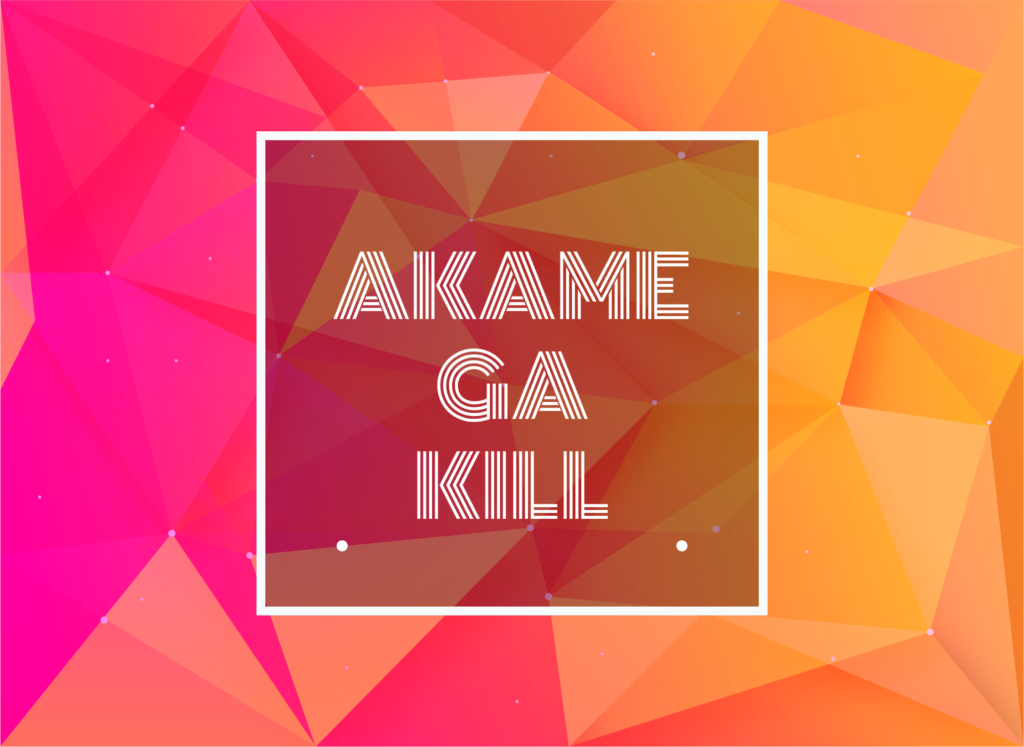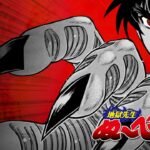In a realm where justice is wielded by assassins and the definition of right and wrong is cloaked in shadows, Akame ga Kill (アカメが斬る) invites us into a gripping saga of rebellion against a corrupt empire. This compelling series, renowned among anime enthusiasts, unfolds differently in its manga and anime forms, each offering a distinct journey through themes of morality, sacrifice, and revolution. Join us as we delve into the dual narratives of Akame ga Kill, uncovering the unique elements that make both adaptations essential experiences for fans of dark fantasy.
The Essence of Akame ga Kill
At its core, Akame ga Kill is a dark fantasy that explores the oppressive nature of a tyrannical empire and the shadows of those who dare to oppose it. The story follows Tatsumi, a young swordsman from a remote village who ventures to the imperial capital in hopes of securing a better future for his people. Unprepared for the depths of corruption he encounters, Tatsumi crosses paths with Akame, a skilled assassin, and becomes entangled with Night Raid—a covert group fighting to overthrow the empire from within.
The Manga’s Embrace of Darkness
The Akame ga Kill manga plunges readers into the grim realities of war and the heavy toll it exacts on those who fight. It doesn’t shy away from graphic depictions of violence and the moral ambiguities faced by its characters. The narrative delves deeply into the psyche of each member of Night Raid, exploring their backstories, internal struggles, and the sacrifices they make. This introspective approach offers a profound exploration of the cost of rebellion and the burdens of wielding justice through lethal means. The manga’s somber tone resonates with readers who appreciate a nuanced and unflinching look at the darker sides of humanity.
The Anime’s Intensity and Action
In contrast, the anime adaptation ignites the screen with high-octane action and emotional intensity. While it stays true to the core themes, the anime emphasizes dynamic fight sequences and the fiery spirit of its characters. Vivid animation and a stirring soundtrack amplify the exhilaration of the rebellion. The camaraderie among Night Raid members is spotlighted, creating emotional connections that engage viewers deeply. This version appeals to audiences who enjoy fast-paced storytelling infused with impactful moments and breathtaking visuals.
Key Differences Between the Manga and Anime
One of the most notable distinctions between the manga and anime versions of Akame ga Kill lies in their story progression and character outcomes. Since the anime was produced before the manga series concluded, the anime diverges significantly in its latter half, creating an original storyline with different fates for several key characters. Let’s delve into these differences:
Divergent Story Endings
Tatsumi’s Fate:
- Anime: Tatsumi heroically sacrifices himself to stop the Emperor’s ultimate weapon, “Shikoutazer.” His death is a poignant moment that underscores the heavy cost of rebellion.
- Manga: While Tatsumi also confronts “Shikoutazer,” he survives but undergoes a dramatic transformation. Merging with his Imperial Arm, “Incursio,” he evolves into a dragon-like being. Though he loses his human form, he retains his consciousness and continues to protect those he loves, ultimately surviving the final battle.
Mine’s Outcome:
- Anime: Mine tragically dies shortly after confessing her feelings to Tatsumi. Her death adds emotional weight to the story and highlights the unpredictable nature of war.
- Manga: Mine survives her critical battle but falls into a coma due to overexertion of her powers. She eventually awakens, and the manga concludes with Tatsumi and Mine reuniting. They are shown expecting a child together, offering a hopeful glimpse of happiness amid the darkness.
Character Development and Relationships
Akame and Kurome’s Relationship:
- Anime: The conflict between Akame and her sister Kurome is addressed but with limited depth due to time constraints.
- Manga: Delving deeper into their shared past, the manga—and its prequel Akame ga Kill! Zero—explores the sisters’ upbringing and the events that led them to opposite sides of the conflict. Their final confrontation is more emotionally charged, providing greater context and impact.
Esdeath’s Complexity:
- Anime: General Esdeath is portrayed as a formidable antagonist with a twisted sense of justice and a fixation on Tatsumi.
- Manga: Esdeath’s character is further developed, revealing more about her background, motivations, and the origins of her “survival of the fittest” philosophy. This insight adds layers to her character, making her a more nuanced and tragic figure.
Expanded Story Arcs and New Characters
Wild Hunt Arc:
- Anime: This arc is omitted due to the series’ limited episodes.
- Manga: Introduces the “Wild Hunt,” a sadistic group loyal to the Prime Minister. Their actions intensify the peril faced by Night Raid and escalate the narrative tension, adding complexity to the political intrigue within the empire.
Additional Imperial Arms Users:
- Anime: Focuses on the main characters and their immediate adversaries.
- Manga: Introduces more characters wielding Imperial Arms, each with unique abilities and backgrounds. These additions enrich the world-building and present new challenges, expanding the scope of the conflict.
Tone and Pacing
Narrative Pacing:
- Anime: Condenses the story to fit a 24-episode structure, resulting in a faster pace that emphasizes action and key plot points.
- Manga: Allows for gradual character development and detailed plot progression. This pacing enables readers to form stronger attachments to characters and fully grasp the stakes of their missions.
Mature Themes:
- Anime: Incorporates intense action and emotional moments but, due to broadcasting limitations, may moderate some graphic content.
- Manga: Delivers a darker narrative with unfiltered depictions of violence, corruption, and the psychological toll on the characters, offering a grittier experience.
Differences in Key Battles and Character Deaths
Confrontations with the Jaegers:
- Anime: Streamlines battles with the Jaegers, providing closure within the limited episodes.
- Manga: Offers extended and more intricate battles, with different outcomes and deeper exploration of rivalries.
Deaths of Night Raid Members:
- The timing and circumstances of the deaths vary significantly:
- Leone: In the anime, she dies after defeating the Prime Minister, succumbing to her injuries in a quiet alley. In the manga, Leone survives the final battle and continues to fight for justice.
- Najenda: Both versions show her surviving the war, but the manga elaborates on her future role in rebuilding the nation.
The Impact of Medium on Storytelling
The contrasting approaches of the Akame ga Kill adaptations are influenced by the inherent differences between print and animated media.
- Manga Advantages:
- In-depth World-Building: The manga provides extensive backstories, political history, and cultural context.
- Character Exploration: Allows for deeper dives into personal struggles, motivations, and relationships.
- Unconstrained Content: Can tackle mature themes and graphic content without the limitations of broadcasting standards.
- Anime Advantages:
- Visual and Auditory Impact: Brings battles and emotional scenes to life with dynamic animation and music.
- Immediate Engagement: The pacing keeps viewers on the edge of their seats, providing an adrenaline-fueled experience.
- Wider Accessibility: Appeals to both hardcore fans and casual viewers who appreciate concise storytelling.
Themes of Morality and Justice
Akame ga Kill challenges conventional notions of heroism and villainy, portraying a world where the fight against tyranny involves moral compromises.
- Moral Ambiguity: Night Raid members are assassins who kill to bring about change, raising questions about the ethics of their methods.
- Cost of Rebellion: Both adaptations highlight the sacrifices required to challenge a corrupt system, including personal losses and the burden of guilt.
- Justice vs. Vengeance: Characters struggle to balance their desire for justice with personal vendettas, adding depth to their motivations.
Character Development and Emotional Depth
The series excels in creating multidimensional characters whose personal journeys resonate with audiences.
- Tatsumi’s Growth: Transforms from an idealistic youth to a seasoned warrior who understands the complexities of justice.
- Akame’s Inner Turmoil: Her stoic exterior hides deep-seated guilt and a longing for redemption.
- Supporting Characters: Each member of Night Raid has a unique backstory that contributes to the overarching narrative, making their fates impactful.
Global Reception and Cultural Impact
Akame ga Kill has cultivated a passionate international fanbase, with its contrasting adaptations fueling discussions and analyses.
- Debates on Adaptations: Fans often discuss which version provides a more satisfying conclusion, offering diverse perspectives on storytelling.
- Influence on the Genre: The series’ blend of dark themes and action has inspired subsequent works in the dark fantasy genre.
- Merchandising and Media: Popularity has led to spin-off manga, light novels, and a variety of merchandise, solidifying its place in anime culture.
Akame ga Kill stands as a compelling example of how a story can be reimagined across different media, each highlighting unique facets of its narrative. The manga invites readers into a shadowed world filled with moral quandaries and deep character studies, offering a more comprehensive and emotionally complex experience. The anime sets the tale ablaze with intense action and vivid emotion, capturing the hearts of those who revel in epic battles and tight-knit camaraderie.
Whether you’re drawn to the profound depths of the manga or the exhilarating spectacle of the anime, Akame ga Kill offers a rich experience where every choice carries weight, and the line between hero and assassin blurs. Dive into both adaptations to fully appreciate the dual narratives of this dark fantasy epic, and witness how Akame ga Kill continues to enthrall audiences with its timeless themes and unforgettable characters.







